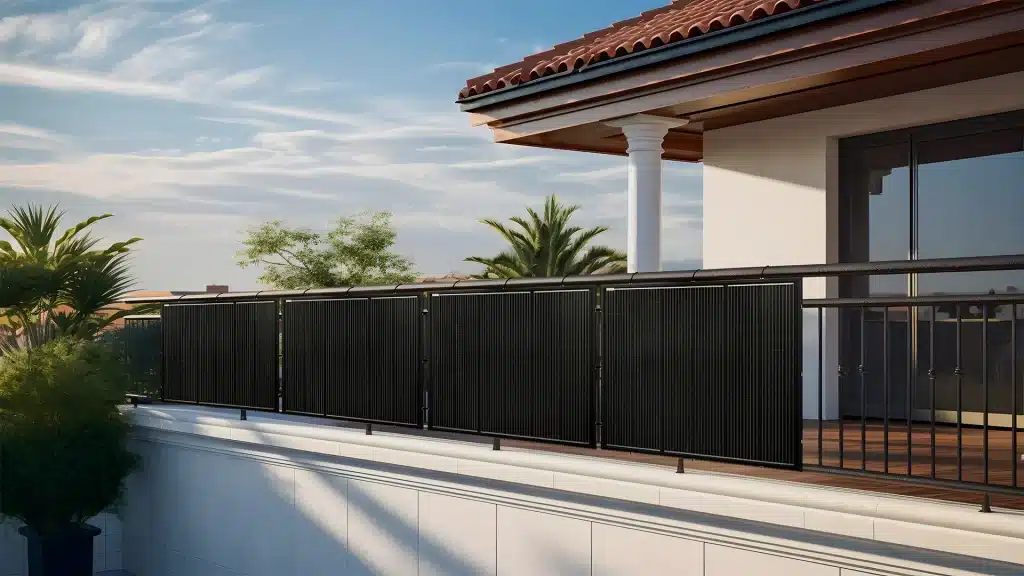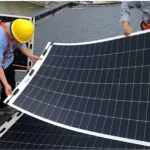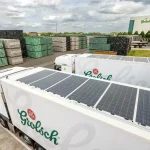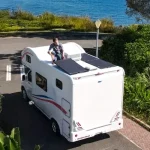Harnessing solar power is no longer reserved for homes with large rooftops or wide-open spaces. Thanks to modern advancements in solar technology, city dwellers and apartment owners can now embrace solar energy through compact and efficient balcony solar systems. These systems are designed for urban settings, offering an eco-friendly solution without the need for extensive installations. In this guide, we’ll walk you through the steps to install a balcony solar system and help you understand its benefits.
Why Choose a Balcony Solar System?
Balcony solar systems are ideal for small spaces and urban living. Here’s why they stand out:
- Compact Design: These systems are lightweight, taking up minimal space on balconies or terraces.
- Energy Savings: Despite their smaller size, they provide enough energy to offset a portion of your electricity use, lowering your bills.
- Plug-and-Play: Many models are easy to install, often coming with an inverter and simple plug-in functionality to connect directly to your home’s electricity supply.
- Sustainability: They allow urban residents to reduce their carbon footprint without major renovations.

Step-by-Step Guide to Installing a Balcony Solar System
1. Assess Your Balcony’s Sun Exposure
Before installing a solar system, check how much sunlight your balcony receives throughout the day. Solar panels work best in direct sunlight, so balconies facing south (in the Northern Hemisphere) will receive the most exposure. Ensure that there are no large obstructions, such as neighboring buildings or trees, blocking sunlight during peak hours (10 AM – 3 PM).
2. Choose the Right Solar Panel System
Balcony solar panels come in different sizes and power capacities. The most common models range between 300W and 800W, like Sungold’s lightweight balcony solar systems , designed specifically for small spaces. Consider your energy needs and the space available when selecting the size and number of panels.
- 300W System: Suitable for small energy needs, like charging devices and powering small appliances.
- 600W to 800W Systems: Provide enough power for larger electronics, reducing more of your energy costs.
3. Check Local Regulations
Some cities or apartment buildings may have regulations about installing solar panels on balconies. Be sure to check with your building’s management and review any local government rules regarding solar installations. You might need to submit an application or ensure the system adheres to safety standards.
4. Mounting the Solar Panels
Balcony solar panels are typically mounted on the railings or walls of the balcony. You can choose between:
- Permanent Mounts: Using rigid solar panels that are fixed securely onto the railing or wall.
- Portable/Flexible Options: For those who rent, portable foldable solar panelsoffer flexibility as they can be removed easily when you move.
When mounting, ensure the panels are angled properly for optimal sunlight exposure. An angle between 30° and 40° is usually recommended, depending on your location’s latitude.
5. Inverter Installation
A key part of any solar system is the inverter, which converts the solar energy into usable electricity for your home. Most balcony systems come with micro-inverters, designed for plug-and-play functionality. These inverters can be connected directly to your home’s grid or used to charge energy storage systems.
6. Connect to the Grid
For grid-tied systems, the inverter can be plugged directly into an AC outlet, allowing the solar energy to flow into your home’s electrical system. Balcony solar systems are often equipped with extension cables to reach indoor outlets. Make sure the inverter is compatible with your local grid standards and certified for safety.
7. Monitor and Maintain Your System
Once installed, you can monitor the system’s performance using an app or monitor provided by the manufacturer. It’s essential to clean the panels regularly to remove dust or debris that can block sunlight. Fortunately, balcony systems are easy to access and maintain compared to rooftop installations.
Conclusion
Installing a balcony solar system is a simple, effective way for city dwellers to embrace renewable energy. Whether you’re looking to save on electricity or reduce your environmental impact, these compact solar solutions offer a powerful way to go green in small spaces. With the right setup, you’ll be able to enjoy the benefits of clean energy right from your balcony.







